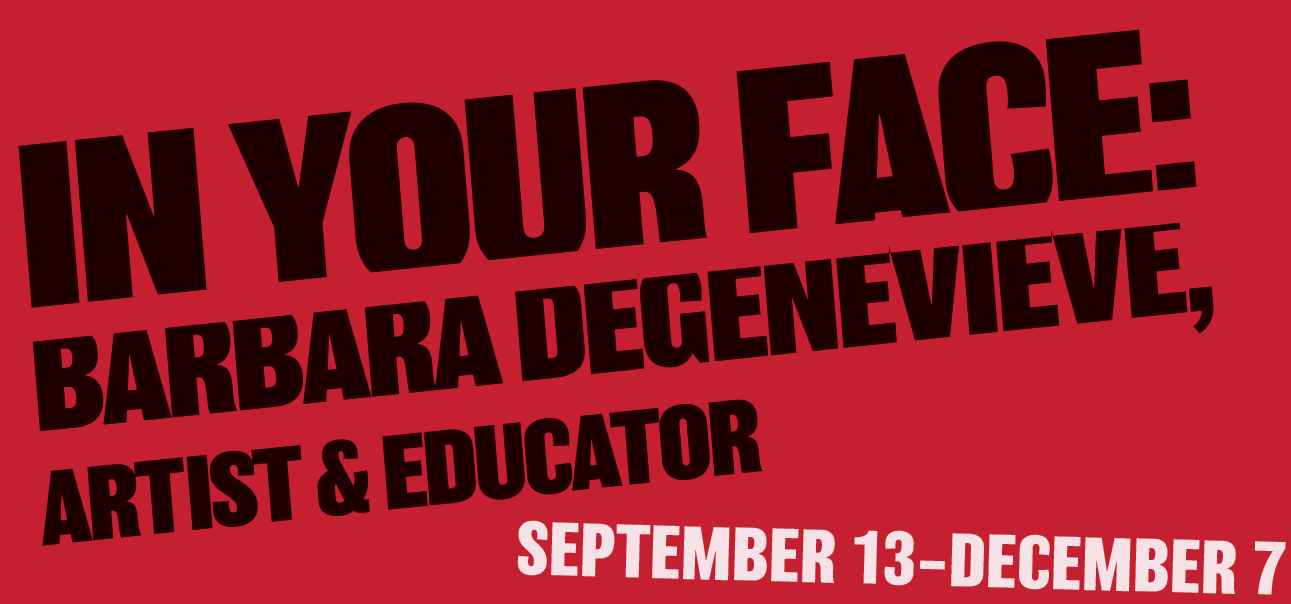Barbara DeGenevieve and the NEA
On August 5, 1994, the very day that Barbara DeGenevieve arrived in Chicago to begin her tenure as a professor in the Photography Department at SAIC, she learned that her National Endowment for the Arts (NEA) fellowship had been rejected, despite the fact that an advisory peer panel had recommended it unanimously to the NEA. The National Council of the Arts, a group appointed by the president to advise the NEA, went against the opinion of these experts and rejected three of the applicants from a pool of 452 grants. Artists Andres Serrano, Merry Alpern, and Barbara DeGenevieve were caught in the middle of a political charade that infamously became known as the Culture Wars of the 1990s. Serrano had submitted works from his “Morgue” series, Alpern included photos taken through a window of a strip club near Wall Street, and DeGenevieve put forth pieces addressing female sexual desire. The committee would have none of it. All of this followed an earlier clash of artistic aesthetic autonomy versus government political intrusion when in 1990, the artists Karen Finley, Holly Hughes, Tim Miller, and John Fleck were similarly sanctioned and their NEA grants denied for seemingly political reasons. The so-called “NEA Four” sued and won in a 1992 district court ruling that found the decency clause used by the NEA to be unconstitutional. However, in 1998, the Supreme Court overturned the decision. The stage had been set for the government to use political criteria over aesthetic quality as a means for assessing artist proposals. In these galleries, you will find DeGenevieve’s work from the early 1990s that elicited the infamous decision to essentially censor her, as well as videos by the NEA Four artists that preceded it. After 1994, the NEA stopped awarding individual artist grants and put tighter restrictions around what kind of art warrants government support. This is still the climate in the halls of government today.
Works by The NEA Four in the exhibition:
Karen Finley
Nude in Museum and Nursing Tape, 1992/1993, Video, 2:42 min
John Fleck
Blessed Are All the Little Fishes, excerpt, 2009, Video, 5:36 min
Holly Hughes
Clit Notes, excerpt, 2009, Video of monologue, 16:09 mins, Courtesy of the artist
Tim Miller
My Queer Body, 1992, Video documentation of performance, 4:34 min, Courtesy of the artist
Monitors, 1995
Monitors: Re-Viewing Cultural Expression
April 7–May 10, 1995
Betty Rymer Gallery, SAIC
Curated by graduate students in SAIC’s Curatorial Practices seminar in 1995, the exhibition Monitors: Re-Viewing Cultural Expression investigated the then-current debate on artistic freedom by presenting a recontextualized appraisal of works by three artists who had recently been denied funding by the National Endowment for the Arts (NEA). By juxtaposing so-called controversial artwork by Merry Alpern, Barbara DeGenevieve, and Andres Serrano with television “monitors” showing daytime talk show segments, the exhibition explored the various ways we negotiated and participated in what was “acceptable for viewing.”
Find Additional Information regarding NEA/Censorship below:
Letter of Protest from Photography Panel to the National Council on the Arts
The Washington Post | Reshuffling the NEA
Artifactions | The Battle over the National Endowment for the Arts

)